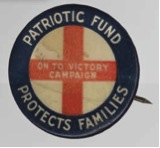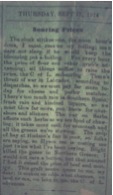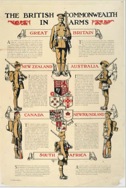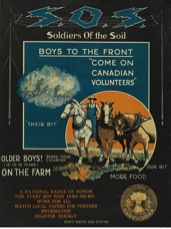Lance Corporal Kendall of the Canadian Engineers wrote home to his family in Ayr from the Valcartier training camp. The Ayr native discussed the strenuous training that he and his fellow comrades were undergoing, as they prepared for deployment in Europe. Kendall discussed the division’s eagerness to “get where the bullets are flying.” He also briefly described how his group constructed a bridge across the Jacques Cartier River, Quebec, in order to transport their artillery pieces. This article demonstrates how proud people were of the work and service that men from the region were offering Canada and the British Empire.
(“An Ayr Boy Writes,“ Elmira Signet, 17 September 1914)










